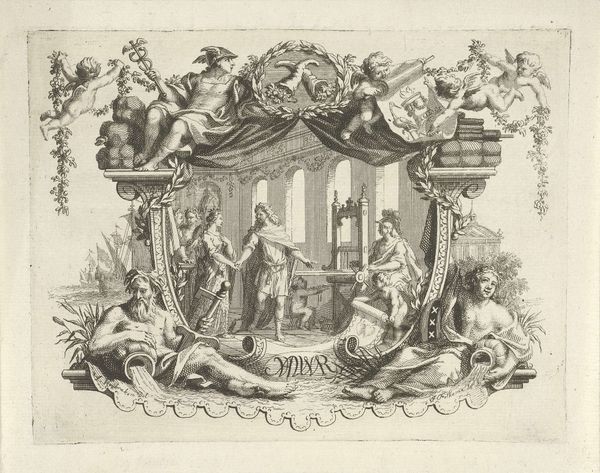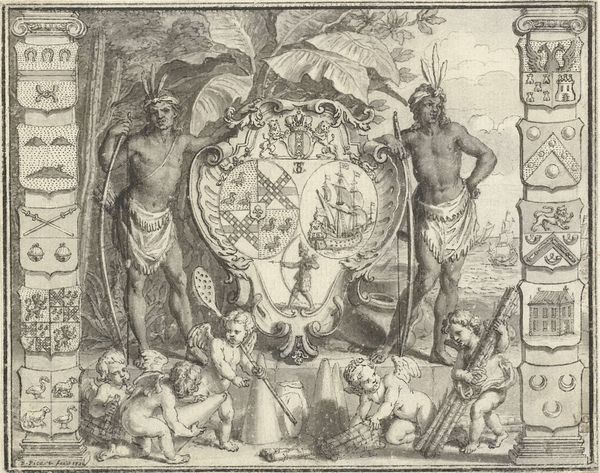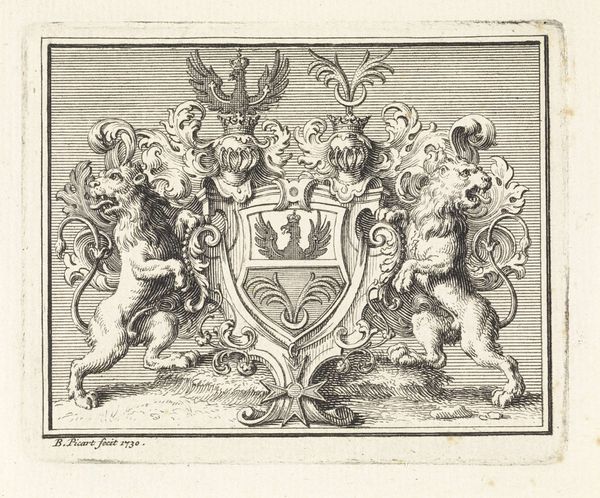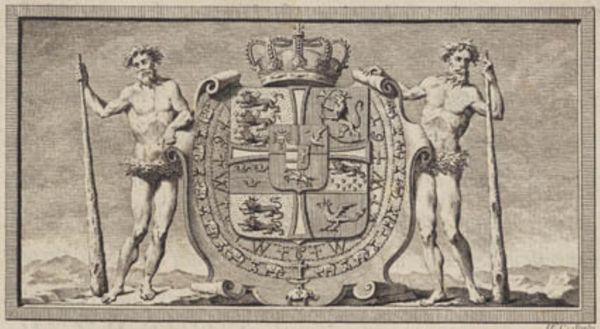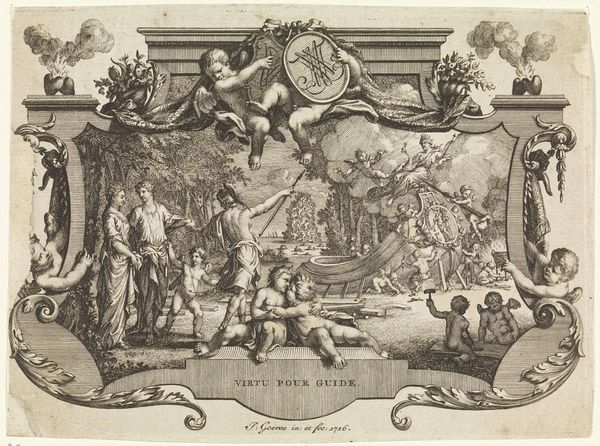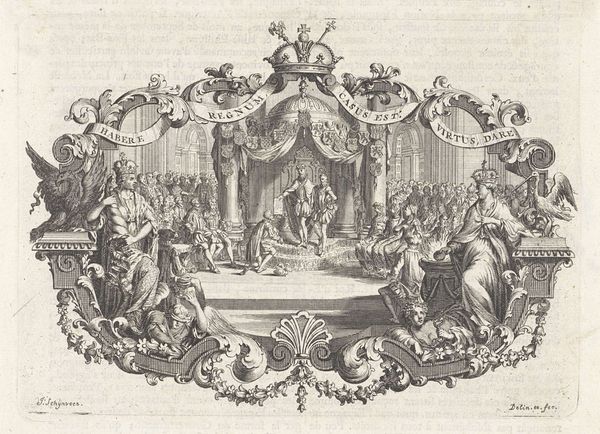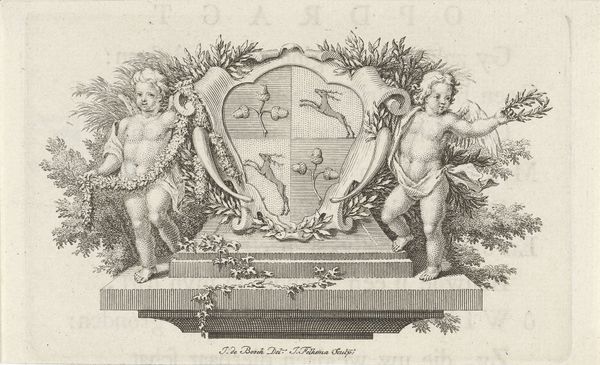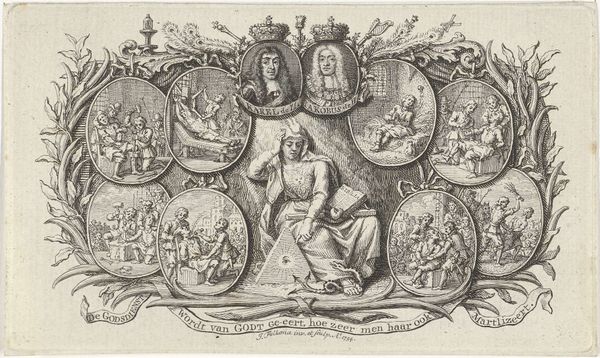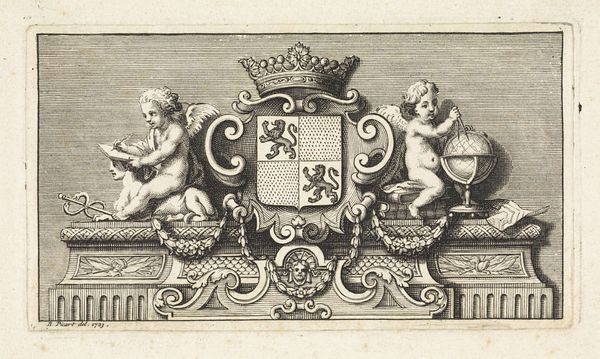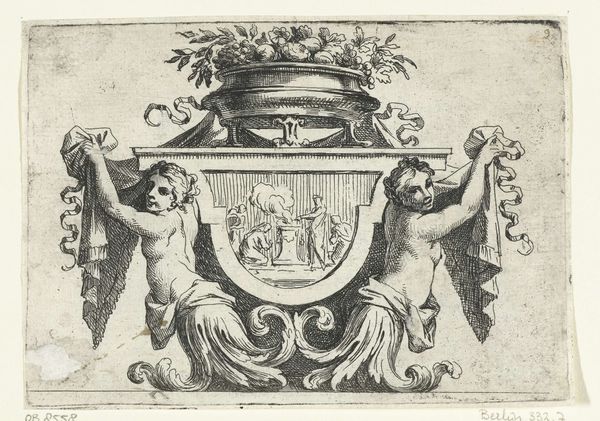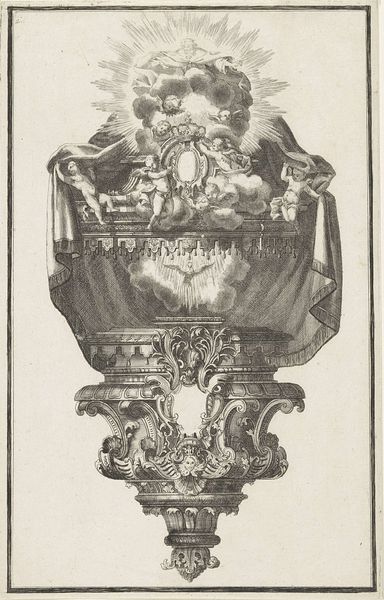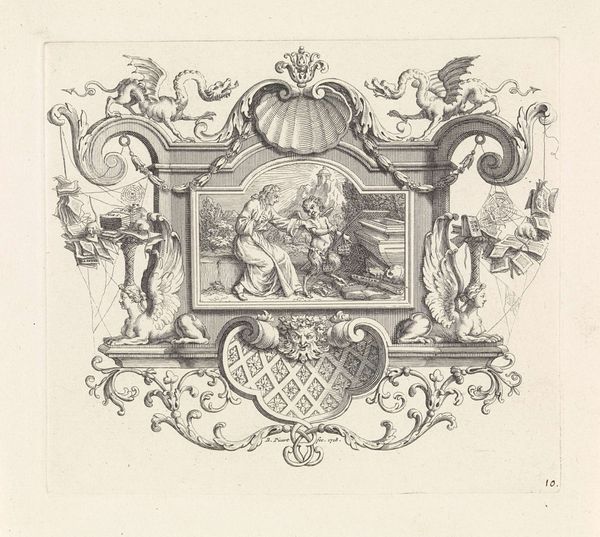
#
comic strip sketch
#
quirky sketch
#
mechanical pen drawing
#
sketch book
#
personal sketchbook
#
sketchwork
#
pen-ink sketch
#
sketchbook drawing
#
storyboard and sketchbook work
#
sketchbook art
Dimensions: height 89 mm, width 129 mm
Copyright: Rijks Museum: Open Domain
Editor: This is Bernard Picart's "Wapenschild van Matthias Johann, graaf von Schulenburg," made in 1728. It looks like an etching, a coat-of-arms, almost comically overwrought, being supported by two…are those Adam figures? How should we read this piece? Curator: The very exuberance you point out can be a starting point. This isn’t simply a decorative emblem; it's a carefully constructed performance of power. Think about what a coat-of-arms is supposed to signify: lineage, authority, and military might. Picart uses classical figures - you noted the "Adam" figures - to support that authority. Do you see any irony or potential for satire in the decision to cloak these figures in such blatant visual references to the Garden of Eden and original sin? Editor: Hmm, that’s interesting! I see it now - a potential commentary. The Adam figures contrast sharply with the militaristic symbolism above them. Like, what is a symbol of purity and original sin doing with symbols of war? Curator: Exactly! Consider the historical context. Schulenburg was a prominent military figure, a mercenary really, in the service of Venice. Picart, working within a mercantile, increasingly enlightened society, seems to be playing with the tension between inherited aristocratic power, and the emerging power structures built on finance and colonial power. He's asking us to consider how traditional symbols of authority are being repurposed, and perhaps even undermined, in this new era. How can old virtues legitimize new brutalities? Editor: So it’s not just a straightforward glorification. There's a subtle critique woven in. Now, that’s really thought-provoking. Curator: Precisely. By examining the apparent contradictions, and digging into the complex intersections of symbolism, power, and historical context, we start to understand how artworks like this operate on multiple levels. What have you learned by exploring this artwork together? Editor: This makes me see that even seemingly straightforward historical works can be ripe with subtle but significant sociopolitical meaning. Curator: Absolutely. This reminds us of how crucial it is to continually interrogate the narratives of power that shape our world.
Comments
No comments
Be the first to comment and join the conversation on the ultimate creative platform.
